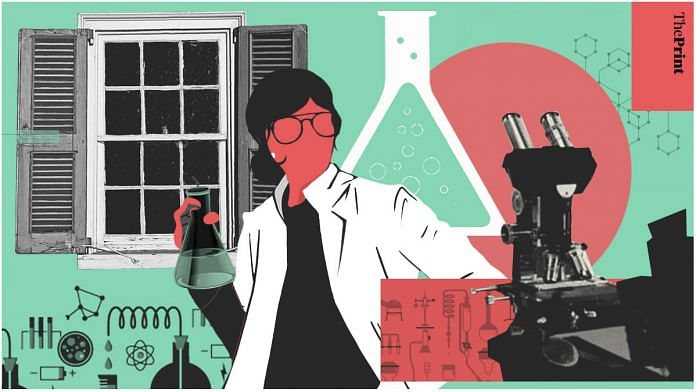India is increasingly aspiring to move from women’s development to women-led development to achieve equitable and sustainable change. Women’s economic empowerment remains at the heart of India’s G20 agenda. There is recognition at the highest policy level in India that empowering women is not just a choice but a necessity.
To achieve equality that is sustainable, we must examine and challenge the underlying structures that perpetuate inequality, such as discriminatory hiring practices and lack of access to education and training opportunities. By implementing systemic solutions that address these issues, we can ensure that leadership positions are open to all qualified and meritorious individuals, regardless of race, gender, or socioeconomic background.
The potential for women’s needs and the cause for gender equality is effectively advanced when digital literacy levels are in their favour. Women are empowered with technological resources to exercise their full potential. India has rightfully identified women’s education as key to poverty alleviation through schemes such as Beti Bachao Beti Padhao, however, data shows that only 33 per cent of women have ever used the internet, and for rural women, this figure drops to around 25 per cent.
Also read: Women in STEM: The growing numbers, challenges and whether it translates into jobs
Grassroots to C-suite
Women have continued to prove that when they lead, sustainable and inclusive outcomes are achieved. Female leadership is an all-pervasive trait that is visible at all levels—right from the grassroots to the C-suite level. Women’s representation in local governments also makes a huge difference. Research showed that with panchayats led by women 62 per cent more drinking water projects were carried out than those led by men. Owing to socio-economic reasons and inherent gender stereotypes or norms, women are often deprived of access to resources that could help them achieve their full potential. This may mean opting for a career of their choice, ability to rise to leadership positions or demand for their rights. It is essential for us to recognise the vulnerabilities, gaps and needs for women at all these levels and find innovative ways of correcting and strengthening them.
India has more women enrolled in science, technology, engineering and mathematics (STEM) than some developed countries with 43 per cent female graduates in at the tertiary level. It is much higher than the US (34 per cent), UK (38 per cent), and even Germany (27 per cent). Indian women are also better represented in paper publications as compared to their global counterparts. However, we must recognise that this figure must translate into employability and leadership. Data from the National Science Foundation showed that while 52 per cent of women enrolled for science, technology, engineering and math courses for graduation, only 29 per cent actually joined the STEM workforce. Even at the C-suite level only 3 per cent of women hold CEO posts in the STEM Industry.
Also read: Alliance launched to increase number of women in STEM education, workforce in India
Dual role syndrome
As per an Observer Research Foundation report, the lack of women in STEM is not merely due to skill inadequacy but also a result of assigned stereotypical gender roles. They are more likely to face ‘dual role’ syndrome, wherein professional decisions are largely affected by their domestic responsibilities. The challenges facing women in STEM are multi-dimensional. From an early age, societal stereotypes and cultural beliefs disallow women to pursue related subjects.
To ensure more women take up STEM and to help retain them on this path, we need change at the systemic level. We must open pathways and dismantle biases that prevent girls from dreaming of a career in science. And address their obstacles by creating conducive workplaces, improving employment prospects and provide them with support that empowers them—able mentorship, skills, leadership development and equal opportunities.
Male allies, mentor support
Another component of ensuring participation of women in STEM is the need for male allies who further facilitate this at the individual, organisational and institutional level. They play an essential role in creating a more diverse and inclusive workplace, that also leads to sustainable and inclusive growth for any organisation.
What can aid our cause is mentoring women along with intersectional, representative, and transformational leadership. Evidence suggests that 80 per cent of workplace and career learnings take place between a mentor and a mentee as they essentially help make sense of the workplace experience. Women leaders are more likely to prioritise the needs of women, children, and communities. Despite women representing 70 per cent of the health workforce, they are an untapped and underutilised talent pool—filling only 25 per cent of senior and 5 per cent of top health organisation positions.
The responsibility for creating and maintaining a conducive environment for women’s socio-economic empowerment, and adequate representation at decision-making tables in health and STEM sectors reside at multiple places including governments, civil society leaders, non-profit and private organisations, the media, and international organisations as well. It is now time to have a Global Call to Action for gender diversity and equality policies to be institutionalised and made center stage at the highest national and global levels.
Dr Renu Swarup is a Former Secretary of the Department of Biotechnology (DBT), Ministry of Science and Technology, Government of India. Dr Shagun Sabarwal is the South Asia Director at WomenLift Health.
(Edited by Ratan Priya)






